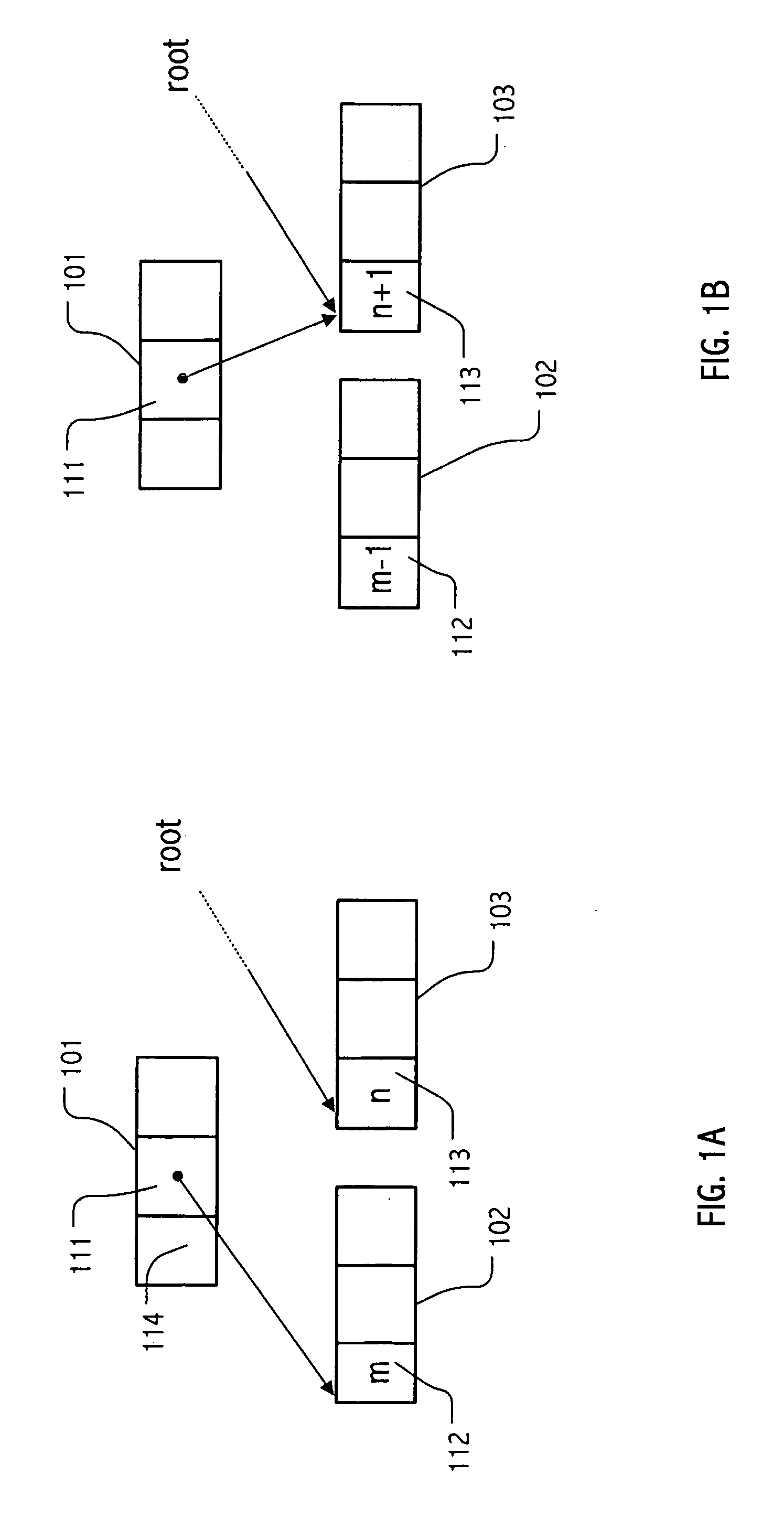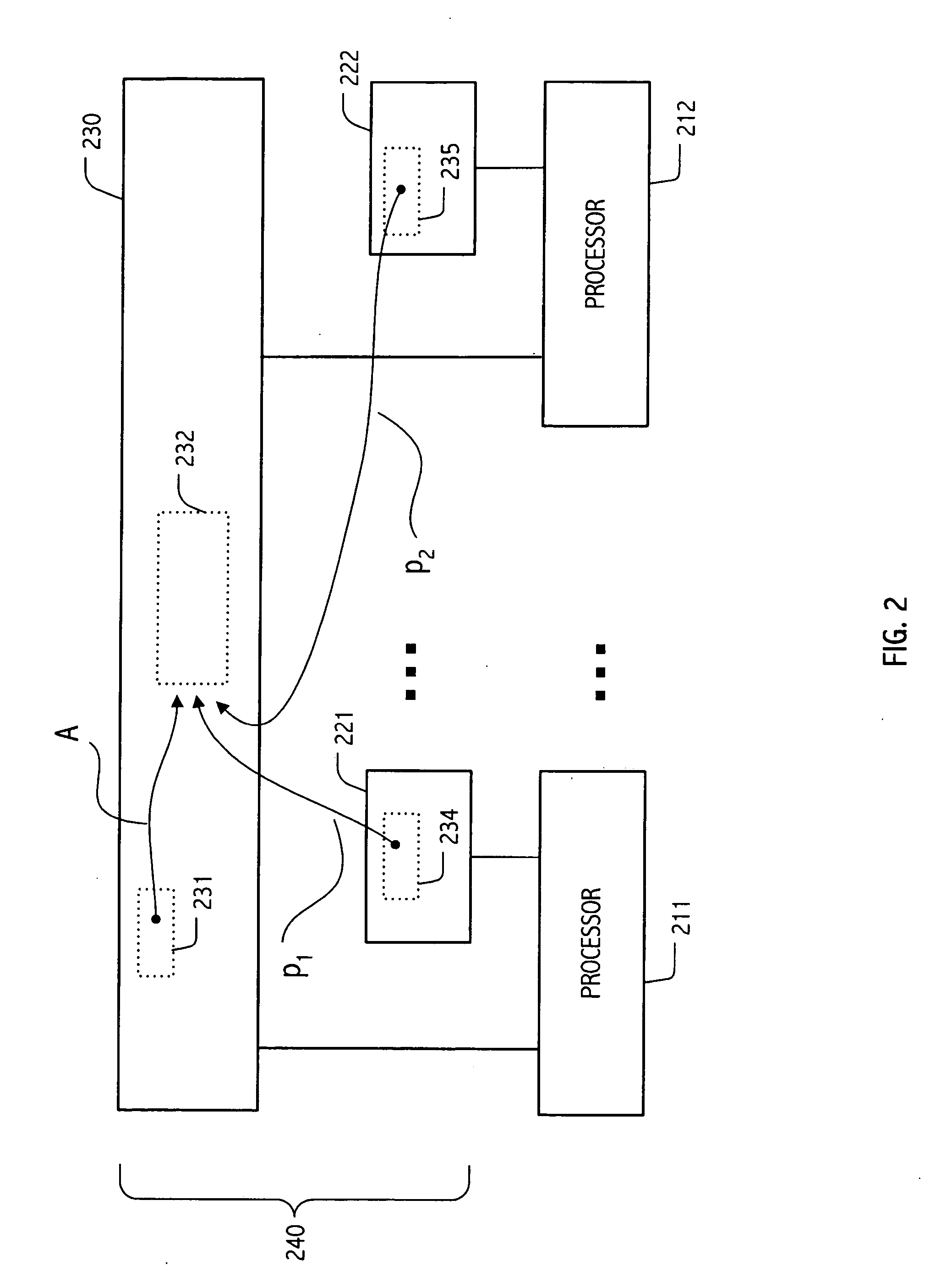Code preparation technique employing lock-free pointer operations
- Summary
- Abstract
- Description
- Claims
- Application Information
AI Technical Summary
Benefits of technology
Problems solved by technology
Method used
Image
Examples
Embodiment Construction
)
[0022] Our techniques are based generally on the notion of reference counting, which persons of skill in the art will recognize as one of the classical methods of managing storage reclamation. See generally, Jones and Lins, Garbage Collection: Algorithms for Automatic Dynamic Memory Management, John Wiley & Sons Ltd. (1996), pp. 19-25 (reviewing reference counting). However, our techniques use synchronization techniques, e.g., using compare-and-swap (CAS) operations, double compare-and-swap (DCAS) operations, load-linked / store-conditional (LL / SC) operation pairs, emulations of such operations, transactional memory facilities or the like, to maintain reference counts consistent with manipulations performed in the course of a given computation, by lock-free pointer operations. In a powerful exploitation of the developed techniques, we employ a strategy of distributing contributions to a “reference count,” rather than representing the complete count of references to a shared object as...
PUM
 Login to View More
Login to View More Abstract
Description
Claims
Application Information
 Login to View More
Login to View More - R&D
- Intellectual Property
- Life Sciences
- Materials
- Tech Scout
- Unparalleled Data Quality
- Higher Quality Content
- 60% Fewer Hallucinations
Browse by: Latest US Patents, China's latest patents, Technical Efficacy Thesaurus, Application Domain, Technology Topic, Popular Technical Reports.
© 2025 PatSnap. All rights reserved.Legal|Privacy policy|Modern Slavery Act Transparency Statement|Sitemap|About US| Contact US: help@patsnap.com



